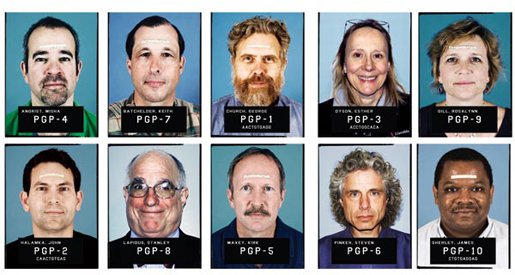
2015 marks the tenth anniversary of the launch of the Personal Genome Project, and the milestone is worth noting for a number of reasons. PGP was the first attempt to assemble a massive study of people willing to publicly share the DNA information from their entire genome as well as their medical history, biological samples, and even additional information like facial images. It has turned out to be an extraordinary success. Yet a decade ago many of his peers thought PGP founder and genomics visionary George Church was betting on the wrong horse. Who, they wondered, would be nutty enough to release their personal genome sequence and medical data to the world? And if anyone did, how would it benefit the field?
Ten years later, it’s tough to find anyone arguing against the PGP. While the project has only sequenced a fraction of the 100,000 participants Church originally sought, the data it generates has become one of the most important resources used by genome scientists around the world. Because PGP participants sign very broad consent forms—granting permission to reuse their data and to allow scientists virtually anywhere to contact them for follow-up studies —the data has become a gold standard for researchers who need a control group for their disease study or who need real-world trial data to test a new health-related algorithm.
The PGP also turned out to be one of the best demonstrations yet that consumers are eager to learn about their genomic data and are willing to share it. The project kicked off long before personal-testing companies like 23andMe or Navigenics emerged, and in some ways helped usher in the field of consumer genetics. The people signing up for PGP weren’t just a bunch of genomic researchers eager to try out sequencing technologies on themselves (although there were certainly some of those); they included also philanthropists and investors and even one of the world’s most prolific sperm donors. Together, they showed that it was cool to be involved in genomics. More importantly, they proved that traditional worries about making personal data public weren’t universally held: There are many people willing to release their data if they think it leads to better science and future cures for disease.
Even though PGP hasn’t received nearly the funding it needs to sequence everyone who wants to take part, it has an impressive track record of inspiring others to launch similar projects. There is now a network of Personal Genome Projects in Canada, the UK, and Austria that bring valuable exposure to the benefits of genomics to consumers in these countries. More such projects are expected in the future.
PGP recently kicked off a new project, the Open Humans initiative. Open Humans espouses the same data-sharing mantra of its PGP parent, but dramatically expands the scope by letting people share genomic and microbiome (the ecology of the human gut) data they have gathered through other providers, such as 23andMe. PGP itself sequences only the genomes of its volunteers, so the size of its database is necessarily limited by how many people it can admit and test. Open Humans helps bypass this challenge by recognizing that consumers are getting their hands on such data from any number of providers—and that pulling it all together could lead to an incredibly valuable genomic resource. Consumers may upload their data to Open Humans and share it with researchers, making the most of their own genomic information.
Back in 2005 when Church first penned an editorial announcing the launch of PGP, few thought it would last for two years, let alone 10. It’s a tribute to the dedicated team running the project, and to the brave souls who were willing to participate in a revolutionary new study, that PGP is not only still running but also that it has played such an important role in shaping genomic research and consumer genomics along the way. Already, scientists are using PGP data to help pinpoint the genetic source of disease in other populations. In the future, this data—as well as that from Open Humans and new PGP-inspired projects—will be instrumental in establishing the associations between variations in DNA and diseases. Such critical insights will pave the way for more effective and more personalized medicine.
The Personal Genome Project Ten Years Later: What We’ve Learned
It's ten years since the launch of the Personal Genome Project. PGP was the first attempt to assemble a massive study of people willing to publicly share the DNA information from their entire genome as well as their medical history, biological samples, and even facial images. A decade ago many thought it crazy. But it has been an extraordinary success.

















